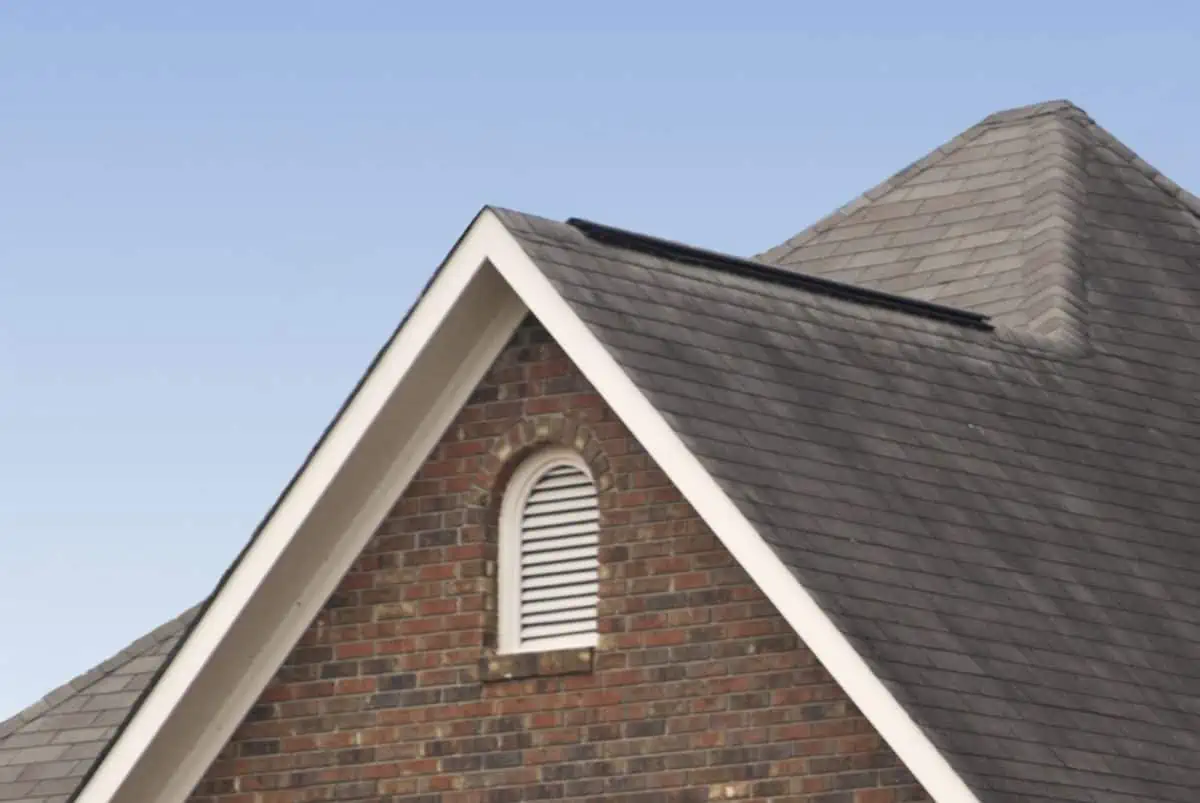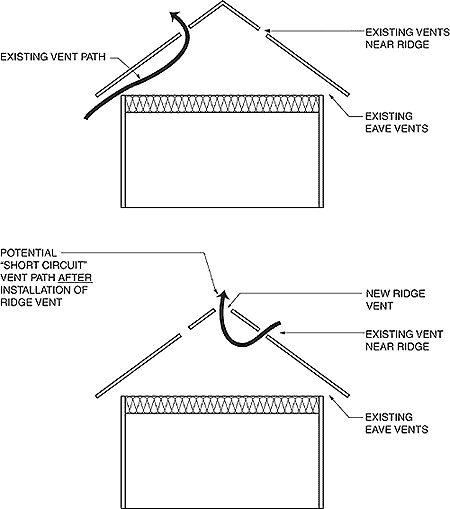When you think of a short circuit, you might be thinking of an electrical problem. A loose electrical connection or frayed wire can accidentally connect with something that is grounded and cause a fuse to blow. This is because electricity wants to take the easiest path to ground. This is the same idea as in attic ventilation. Airflow will follow the path of least resistance, just like electricity. Short-circuiting is a common attic ventilation problem and I want to demonstrate the issue so you can identify it for yourself and fix it if it’s present in your attic.
We’ve already addressed the importance of good attic ventilation here – it is vital to keeping mold out, saving energy and prolonging the life of your roof and home. But how does short circuiting happen and how would you know about it?
What is occurring during a ventilation short circuit?
Short circuits happen when air does not follow the intended path, instead, it follows a shorter path than intended. This means air can enter from a point that was not intended, like an exhaust vent a and travel to another exhaust vent.
Why is this bad?
This is bad because ventilation is meant to sweep out moisture and heat buildup in all areas of the attic. If you have a short circuit situation, some areas are remaining stagnant and no airflow is available to move that moisture and heat. If this happens consistently for a long time, this can lead to mold, heat buildup and potentially early roof failure.
Isn’t more exhaust better?
No, your exhaust should be determined by the size of the attic space it’s meant to ventilate and the intake should be sized to match the exhaust. The balance is what’s important.
What are some common examples of a short circuit?
The most common example is if multiple types of exhaust vent are installed. If you have a ridge exhaust combined with a roof louver, they can end up using each other as intake, instead of the proper intended intake at the soffit vents. This means the lower area of the roof would go under-ventilated.
Another example is if you have a power vent system that isn’t balanced with the intake, it can pull too hard and end up pulling from gables or roof louvers when it shouldn’t.
Gable louvers should never be mixed with another type of exhaust. This is common, however, because gable louvers have a nice aesthetic that homeowners desire. If you have a mixed exhaust system and gable louvers are causing short circuiting, you should blank off the gable louver with plywood on the inside to maintain the look but avoid the short circuit situation.
How can I fix it?
The best way is to maintain consistent ventilation types. If you are going with ridge vents, use those throughout and block off any other types of exhausts. If you are using roof louvers, block off gable vents. If you have a power vent system, make sure to take out any other sources of exhaust on the roof and patch accordingly.
Be sure to also balance the system so that there is enough intake to account for the exhaust, roughly 50/50 ratio works best. This helps to ensure proper ventilation, avoid short-circuiting and avoid rain and snow from being entrained in the intakes.
If you have roof ventilation or short circuiting questions, be sure to call the Pros for some help at 888-776-1998 or visit our estimates page to schedule an appointment.


